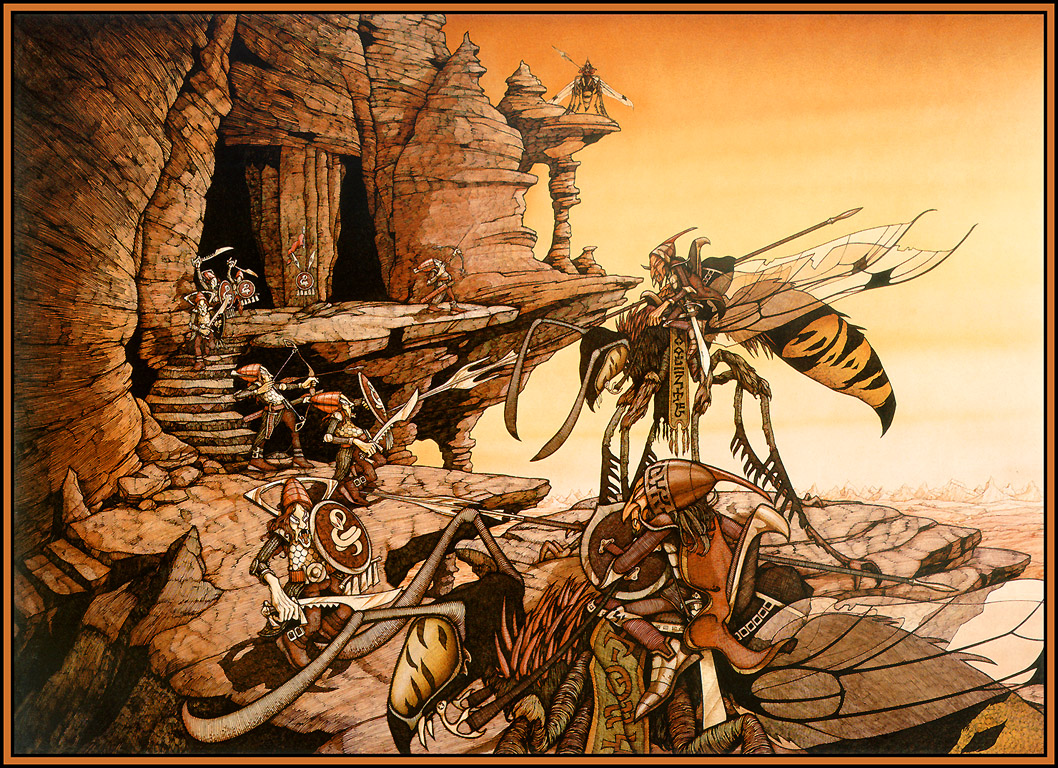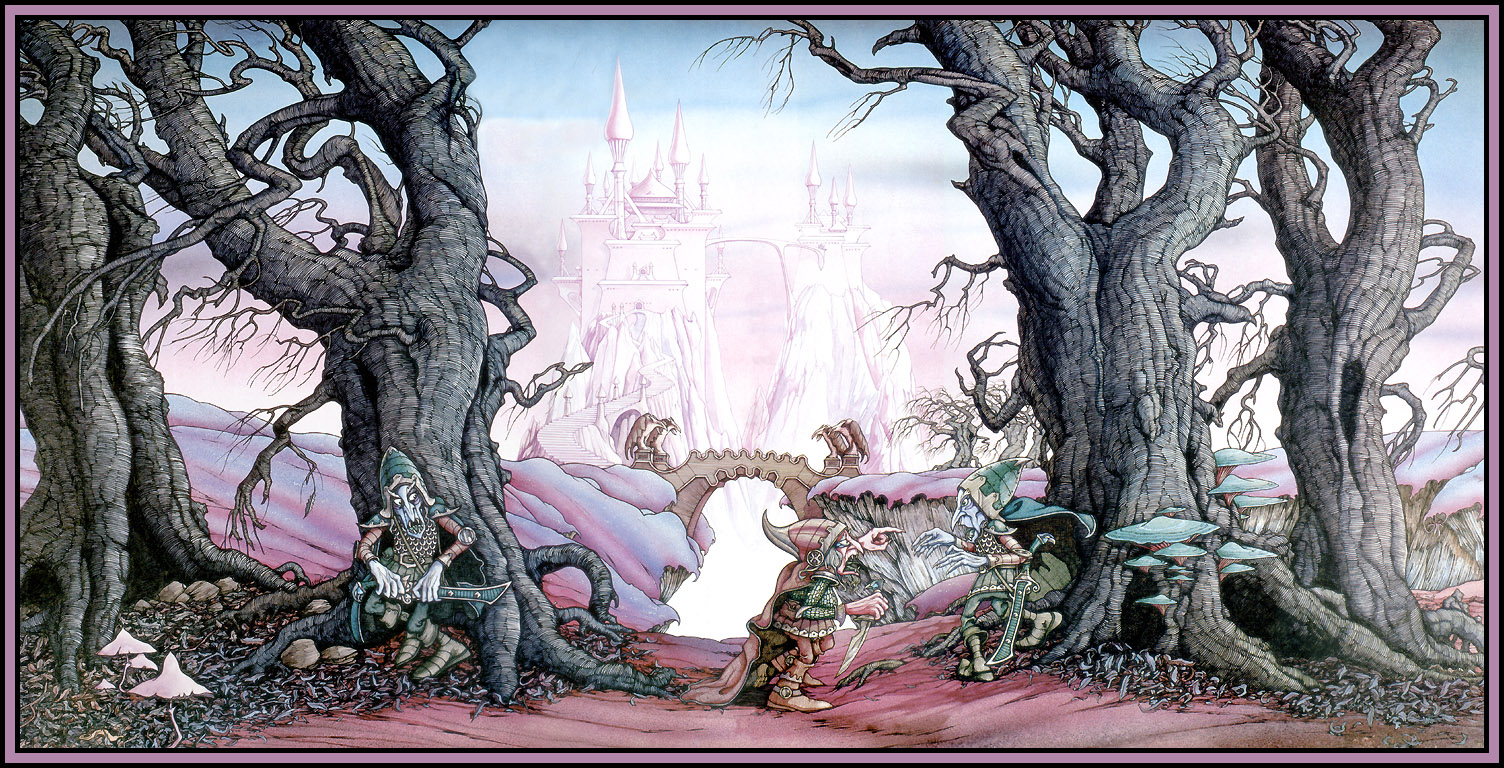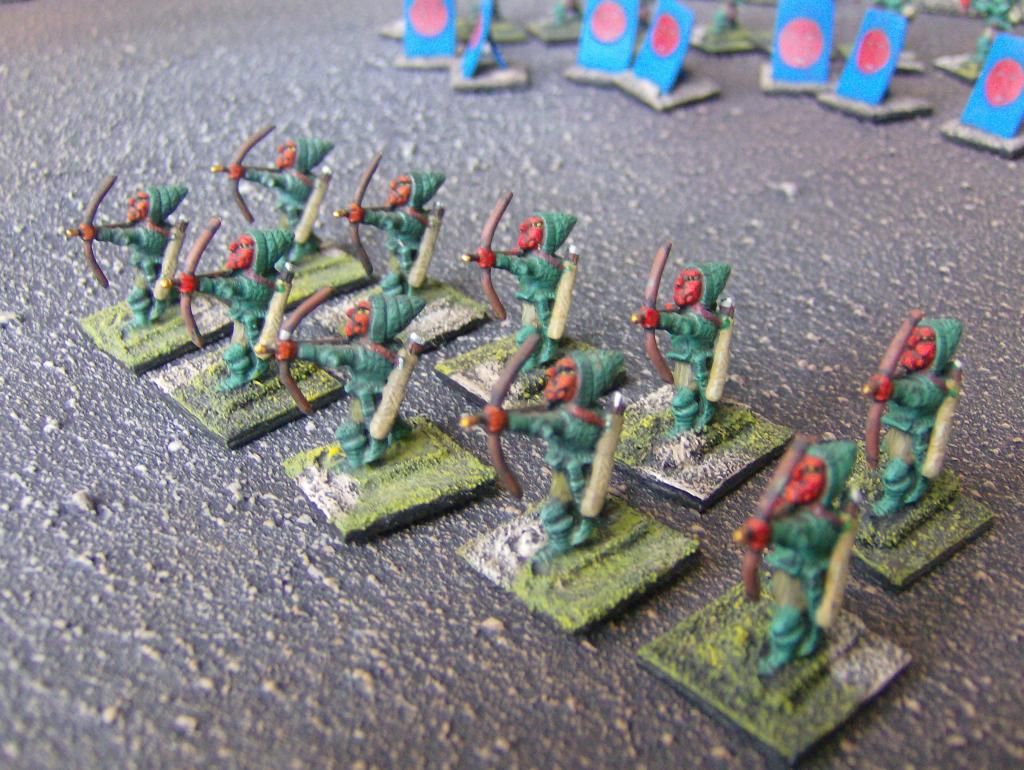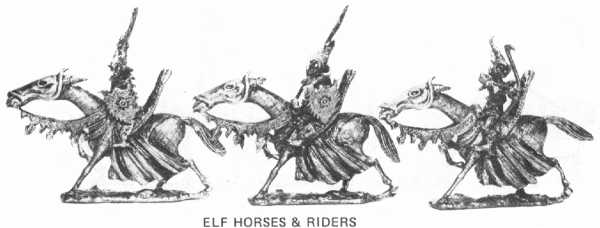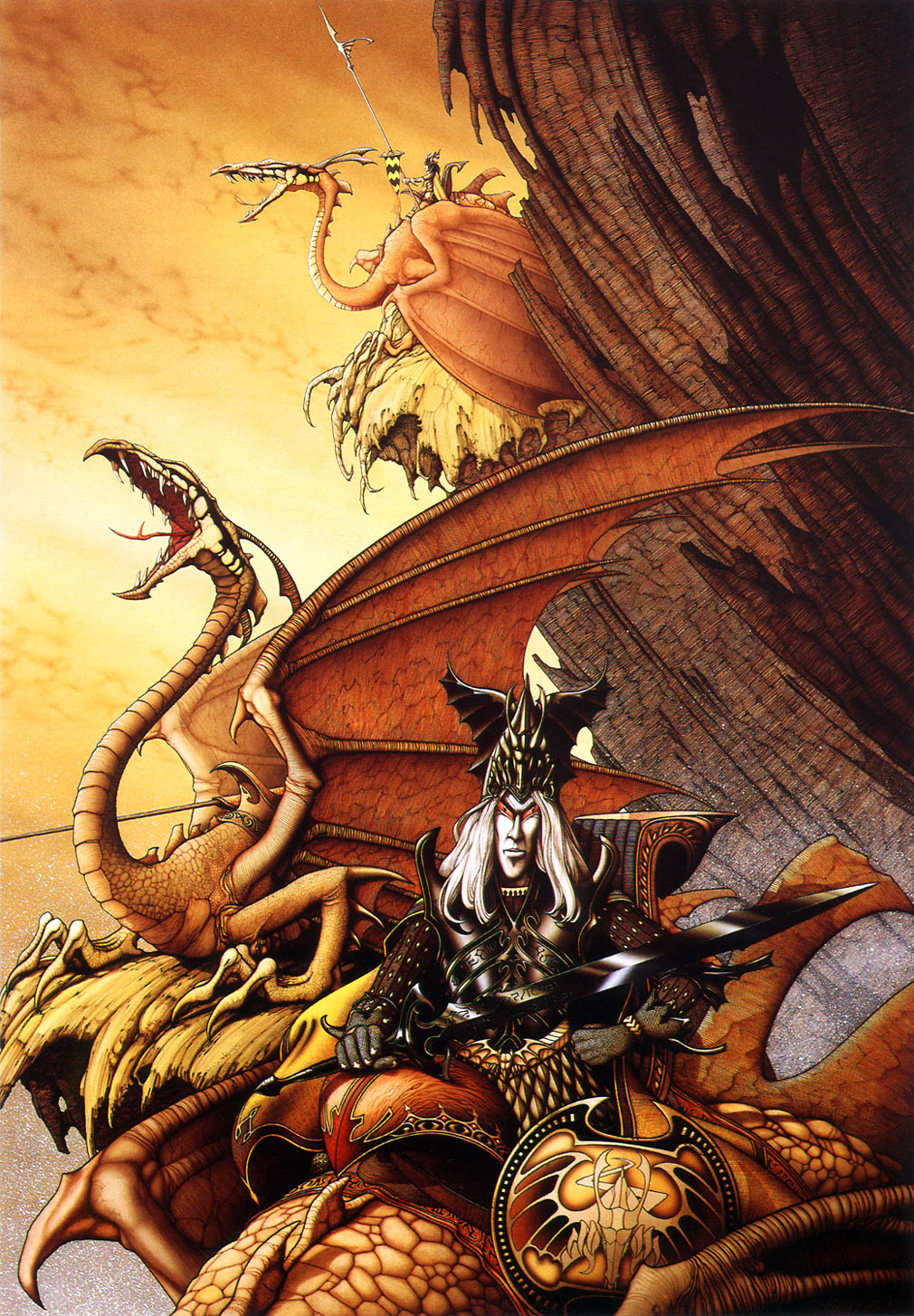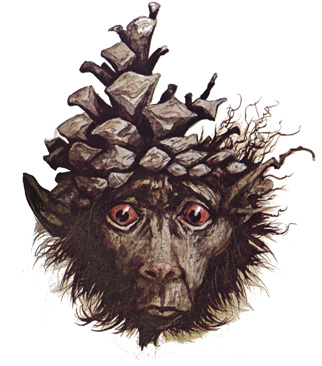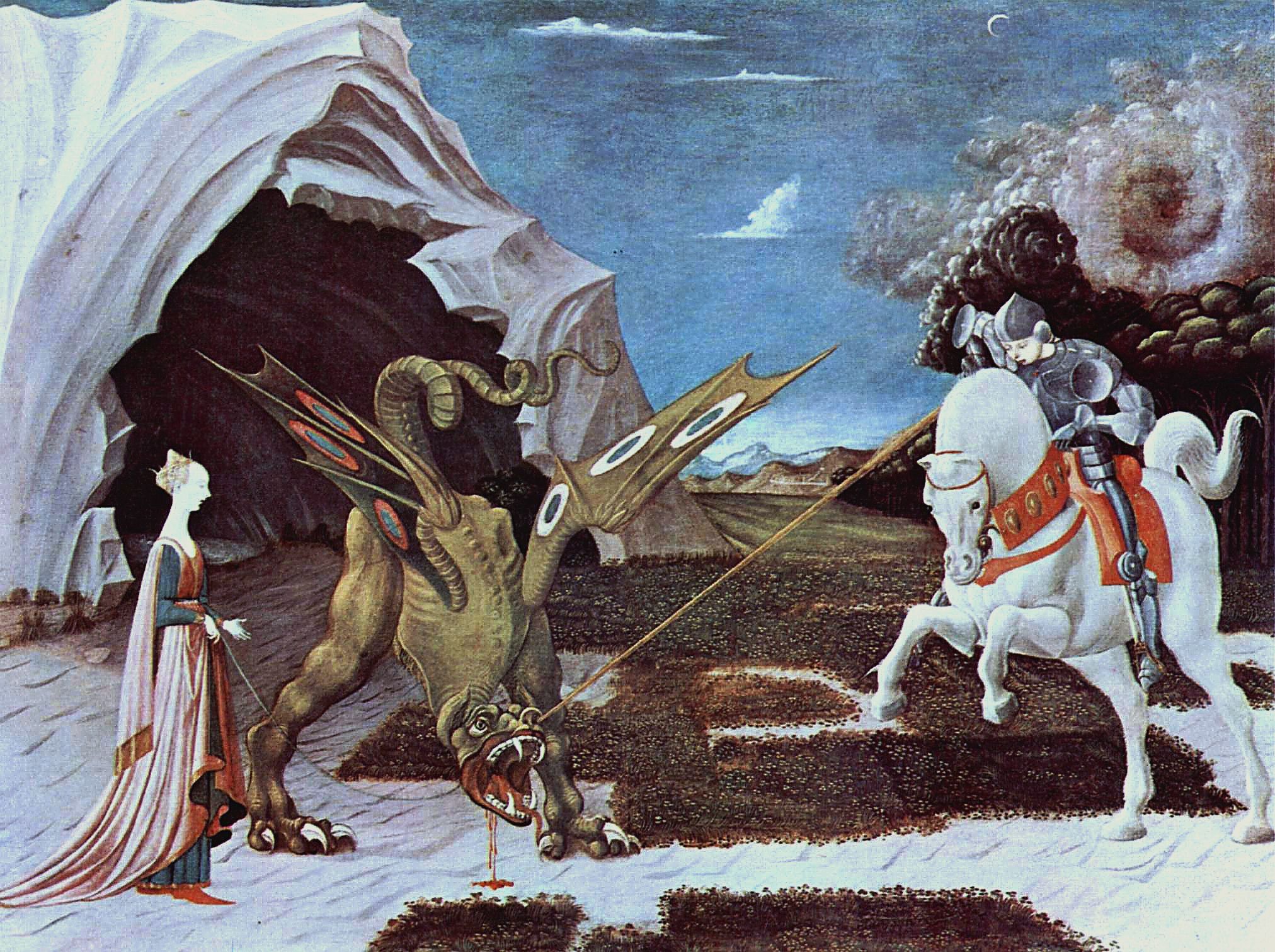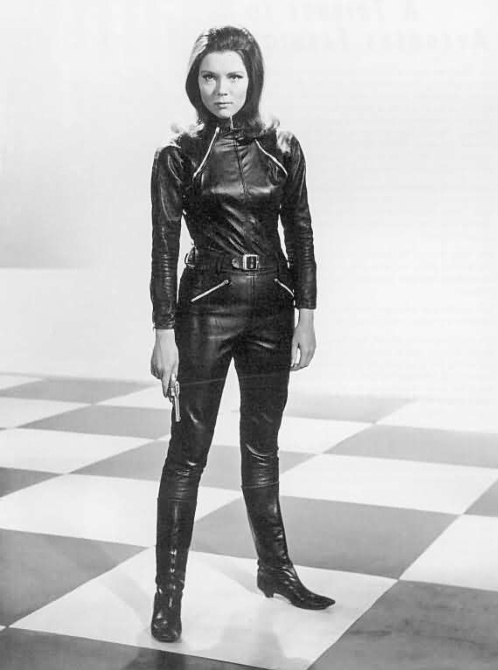H.G Wells is often lauded as being the father of modern hobby war gaming, with his
Little Wars published in 1901. It's an interesting rule-set and very much a-kin to the idea of playing with toy soldiers. Combat is largely resolved by kinetic means - literally firing things from toy cannons, not unlike the 1980s classic
Crossbows & Catapults.
He finished the book with an appendix on
Kriegspiel, originally by Georg Leopold von Reiswitz in 1812 adopted by the Prussian army as a training mechanism for officers. Some of the key factors are maps, tables, random factors and a games master - usually in this case a high ranking officer who has field experience and will adjudicate based on that in-the field experience (not simply his opinion of rules interpretations, something to think on in terms of RPGs).
Immediately we're faced with one of the fundamental divisions within gaming discourse, the separation between
hobby and
serious wargames. Finding the fun in something like
Phoenix Command can be a bit of a challenge for some, but as
Wounded Ronin put it, "if people played more games like Phoenix Command, the IQ of our collective society would go up."
In my opinion
Kriegspiel looks significantly more like wargaming, role-playing and online-gaming as we know it today than
Little Wars does. This could be down to journalistic oversight on the part of the commentators- an unfamiliarity with contemporary and historical wargaming, and taking a non-critical view of the materials at hand, perhaps confusing Wells
Appendix on Kriegspiel following the suggestions of Colonel Mark Sykes with the content of
Little Wars itself. Possibly taking at face value Wells criticism of Kriegspeil as being "complex", many versions of it is in fact far, far simpler than any contemporary wargame, and absolutely no where near the IQ pushing levels of Phoenix Command. However I'm not sure any distinction regarding the rules themselves is as significant as promoting a
British Science Fiction Author as the
founder of all Gaming as we know it, rather than a
Prussian Military Scientist. History: it's political.
Kriegspiel itself developed into two forms, the Strict (rules-orientated) and Free (games-master orientated, General Julius von Verdy du Vernois 1876 ) - a division which still dominates the discussion of open ended and simulation based gaming today, in Tournament and Open gaming, playing by-the-book or house-ruling - the discourse is right there in the development of Kriegspiel, the territory mapped, positions laid out, strategies developed and systems deployed. But the general
psychic lethargy of gamers towards the history of gaming beyond "that one game I like" means these approaches to game design are endlessly debated rather than being documented and understood. These were the two main forms of playstyle, as
Kriegspiel was adopted by armies around the world, and multiple variants developed and expanded.
Beyond the game mechanics and playstyles, there's another significant duality which opens up. H.G. Wells is much better known as a Science Fiction author for works such as
The Time Machine and
War of the Worlds than his limited repertoire as a game designer. Yet he never crossed the streams and transformed his historical (Napoleonic level tech) wargames into Science Fiction gaming. It may have been a simple technological issue, in a similar way the Beaker People couldn't have invented malware, the cultural building blocks weren't in place to achieve it, or a product of his increasing pacifism in the face of the horrors of WW1 or simply a matter of not having the time or inclination. Yet the Historical / Fantasy (yes, including Space Fantasy here) divide in wargaming was long and persistent.
Whatever the cause, Wells didn't game his Martian
Tripods taking over some alternate Europe, nor the skirmishes of the
Eloi and Morloks, in their grim dark caves of the far future, and it has fallen to others to make the game, and envision the material cultures of H.G. Wells. And here is where
Steampunk and/or
Victorian Science Fiction steps in, and opens up another duality and something of a false dichotomy.
If I search for
Steampunk I invariably get images like this:
If I search for
Victorian Science Fiction I invariably get images like this:
I don't really need to point out the dualities in those sets of images do I? I have to reign it in a little and not go off the deep end about the image, society of the spectacle and all that. However that may be part of the reason for the development of
Victorian Science Fiction, whilst
Steampunk started out as a genuine attempt at retro-futurism, things took a slow and gradual expansion into the realm of the Burlesque. Ultimately they are different approaches to the same territory, both have a dedication to craft and spectacle, both present historical ideas of the future as their basis.
 |
| yeah. tangents. |
Which reminds me of how the original Speculative Fiction -punk game, R Talsorians
Cyberpunk, was originally set in 2013, which is now history, which makes this extremely 1980s vision of the future also retro. The stunning black and white illustration hugely reminiscent of the work of Peter Nagel and Hajime Sorayama. The American government treat the early release of a Japanese corporations entertainment products by an unidentified group of hackers, as cause for economic sanctions and according to some sources blacking out the communications infrastructure of North Korea.
And that's just yesterdays news. is there any doubt we are all living in a William Gibson novel?
Meanwhile, on the other edge of psyberspace, we've pulled the levers, cranked the handles adjusted the aetheric tubes and published the
Meridian Miniatures Webshop!
The initial wave of releases center around the
Steam & Aether range, a wargame set in a post apocalyptic 19th Century Europe, where strange, alien technology has ripped open the time-space fabric that was once France and spewed all sorts of strange otherworldly technology and creatures across it. Battling for control of the region and scavenging for technology in the wreckage are forces of British and Prussian troopers. The models are multi pose war gaming figures, with a vast array of head and pose options, bringing variety to massed, marching troops and skirmishing warbands.
What seems strangely significant that a game-world that centres on alternate history gives us an alternative vision of gaming history itself. The British (
Little Wars) vs. Prussian (
Kriegspiel) take wargaming into its origins not only as a game design, by setting it in the period Wells was gaming in, but also bridging the chasm between H.G. Wells hobby wargaming and his Science Fiction writing. Had Meridian been around in 1901 and been producing these kind of red-team / blue-team gaming pieces, no doubt Wells would have spent his time fighting his
Kriegspiel with Stroboscopic Prismatoniums and Telesisted Kinetomats instead of rifles and cannons, expanding his Prussian Empire to the Moon and beyond.
